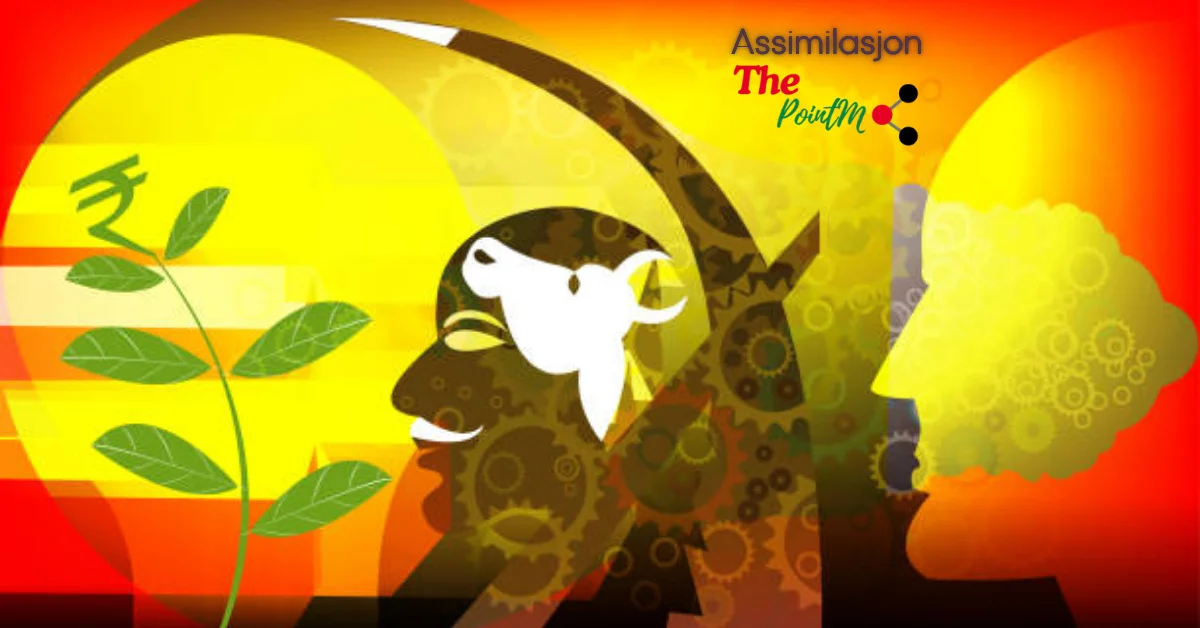Cultural landscapes are ever-evolving, shaped by the interplay of traditions, beliefs, and practices. At the heart of this transformation lies a powerful concept: assimilasjon. This term encapsulates the process through which individuals or groups adopt elements from another culture, often leading to significant changes in identity and social dynamics. But what does assimilation truly mean in today’s world? How has it played out historically, especially in diverse societies like the United States?
As we delve into this fascinating topic, you’ll discover how factors such as economic opportunities, social pressures, and personal choices influence assimilation processes. We’ll explore both successful integrations that celebrate new identities and challenges that arise when cultures collide. Whether you’re curious about cultural shifts or seeking insights on fostering positive change within communities, understanding assimilasjon is key to navigating our interconnected lives. Let’s embark on this journey together!
Defining Assimilation and Cultural Change
Assimilasjon refers to the process where individuals or groups adopt the cultural traits of another society, often leading to a blending or erasure of original identities. This phenomenon can occur through various means such as marriage, education, and social interactions.
Cultural change encompasses more than just assimilation. It involves shifts in norms, values, and practices within a society over time. These changes can stem from external influences like globalization or internal dynamics like technological advancements.
While assimilation tends to highlight the adoption of dominant cultural elements, it also raises questions about power dynamics and identity preservation. How much does one culture need to give up in order to fit into another?
Understanding these concepts allows us to appreciate the complexities surrounding human interaction and societal evolution. The interplay between assimilasjon and cultural change shapes our communities every day.
The History of Assimilation in the United States
Assimilation in the United States has a complex history. It began with early European settlers who sought to impose their cultural norms on Indigenous peoples. The idea was that newcomers should abandon their original customs.
As waves of immigrants arrived, each group faced pressures to conform. The Irish, Italian, and Eastern European communities often encountered hostility but gradually adapted to American ways.
The late 19th and early 20th centuries marked significant changes. Policies promoting assimilation aimed at integrating diverse populations into a singular national identity emerged. This era saw schools teaching English and American values as essential components of citizenship.
World War II further shifted perspectives on assimilation. Many recognized the importance of cultural diversity while still navigating expectations for conformity within society.
Through these historical phases, assimilation has been both a unifying force and a source of tension among different groups striving for recognition and acceptance in America’s evolving landscape.
Factors That Influence Assimilation
Several key factors influence the process of assimilation. One significant element is socioeconomic status. Individuals with higher economic resources often find it easier to adopt mainstream cultural practices.
Education also plays a critical role in shaping assimilation experiences. Access to quality education can facilitate integration into dominant social groups, enhancing communication and understanding.
Geographical location matters too. Urban areas typically offer more diverse environments where different cultures intersect, making adaptation more fluid compared to rural settings.
Family dynamics further impact how individuals navigate their cultural landscape. Supportive family structures encourage openness while preserving elements of one’s original culture.
Government policies on immigration and multiculturalism shape the environment for assimilation. Inclusive policies can foster acceptance, whereas restrictive measures often lead to isolation or resistance among immigrant communities.
Examples of Successful and Unsuccessful Assimilation
Successful assimilation often shines through in communities that blend traditions while maintaining their essence. For instance, the Italian-American experience highlights how immigrants adopted American customs while preserving rich culinary and family traditions. This fusion created a vibrant culture celebrated nationwide.
Conversely, unsuccessful assimilation can lead to cultural erasure and identity crises. The Native American experience exemplifies this challenge. Forced assimilation policies stripped tribes of languages and customs, resulting in deep-rooted trauma that still affects many today.
Another case is seen within various refugee groups who struggle to integrate into new societies without losing their heritage. While some manage to navigate dual identities successfully, others face marginalization or resistance from the dominant culture.
These examples illustrate the complexities of the assimilation process, showcasing both its potential rewards and pitfalls for individuals and communities alike.
The Effects of Assimilation on Individual and Group Identities
Assimilation deeply impacts both individual and group identities. For many, adopting the dominant culture can lead to a sense of belonging. It often provides opportunities that wouldn’t have been accessible otherwise.
However, this shift comes with complexities. Individuals may struggle with their cultural heritage, feeling caught between two worlds. The loss of native languages or customs can create an internal conflict regarding identity.
For groups, assimilation might dilute unique traditions and practices. Communities risk losing their distinctiveness as members adopt mainstream behaviors and beliefs.
Conversely, some find strength in blending cultures. This hybrid identity can foster innovation and creativity within communities while maintaining core values from their origins.
The journey through assimilation is not linear; it varies widely among individuals based on personal experiences and societal context. Each path shapes how people perceive themselves in relation to others around them.
How to Foster Positive Cultural Change Through Assimilation
Fostering positive cultural change through assimilation starts with education. Awareness programs can bridge gaps between cultures, highlighting shared values and traditions.
Encouraging dialogue is essential. Creating safe spaces for conversations helps individuals express their experiences and challenges related to assimilation.
Community involvement also plays a crucial role. When diverse groups collaborate on projects, they create bonds that transcend cultural boundaries. This teamwork fosters mutual respect and understanding.
Mentorship initiatives can guide newcomers in adapting while preserving their unique identities. Pairing them with established community members allows for smoother transitions into the new culture.
Celebrating diversity within the assimilated culture enriches the broader society. Festivals, art exhibitions, and culinary events showcase different heritages, promoting appreciation rather than erasure of distinct backgrounds.
Advocating for inclusive policies ensures that all voices are heard in decision-making processes. Such actions support a harmonious coexistence where everyone feels valued and empowered.
Conclusion
Assimilasjon is a multifaceted process that shapes cultural landscapes across the globe. Understanding its nuances allows us to navigate the complexities of identity and integration more effectively. By examining historical contexts, we can see how assimilation has played a pivotal role in shaping American society. It also highlights the various factors influencing this cultural transformation, such as socio-economic status, education levels, and community support.
Successful examples of assimilation showcase positive outcomes where individuals thrive while maintaining aspects of their original culture. Conversely, unsuccessful cases reveal the challenges faced by those who struggle to balance their heritage with new societal norms.
The impact on individual and group identities cannot be overstated. Assimilation often leads to changes in self-perception and communal ties. This evolution can foster unity but may also generate tensions within groups striving to preserve their unique identities.
To promote positive cultural change through assimilation, it is crucial to create inclusive environments that value diversity yet encourage shared experiences. Engaging communities in dialogue fosters understanding and respect for different cultures.
Understanding assimilasjon is vital for fostering harmonious coexistence in an increasingly interconnected world. Embracing both our differences and commonalities enriches societies while paving the way for future generations who will continue this journey of cultural exchange.

